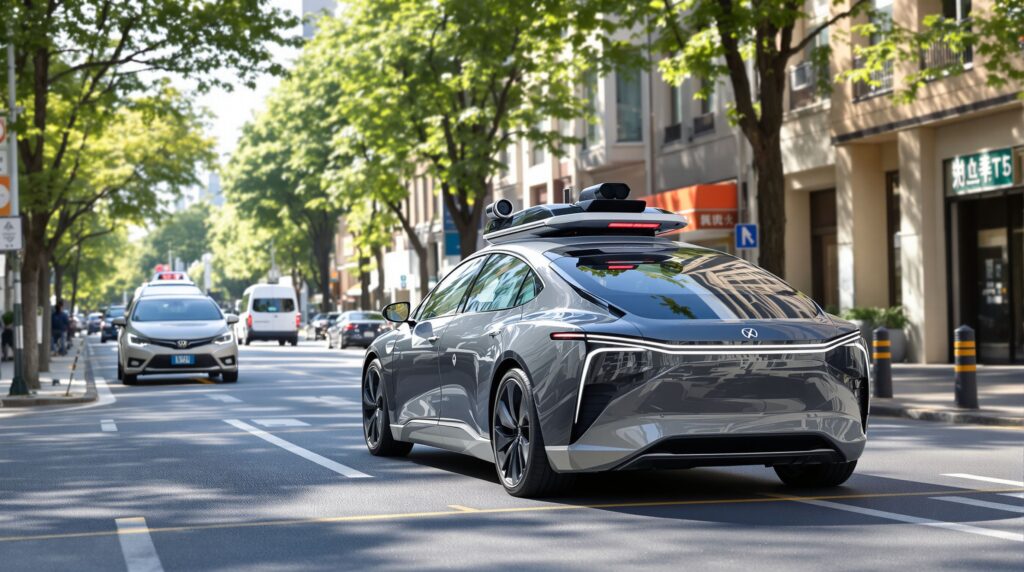China AI Native Industry Insights – 20251126 – Tencent | LiblibAl | Xiaomi Corporation | more

Explore Tencent’s HunyuanOCR 1B parameter model, LiblibAI’s advanced F.2 algorithm with image support, and Xiaomi’s MiMo-Embodied Model for robotics. Discover more in Today’s China AI Native Industry Insights.
1. Tencent Unveils HunyuanOCR: An Innovative 1B Parameter Open-Source Model
🔑 Key Details:
– Tencent announces the launch of HunyuanOCR, a 1B parameter open-source OCR model.
– The model achieves SOTA performance in complex document analysis, scoring 94.1 on OmniDocBench, surpassing leading models.
– HunyuanOCR supports 14 languages and excels in text detection, recognition, and document extraction.
– Applications include automated data extraction from receipts and real-time video subtitle recognition.
💡 How It Helps:
– AI Developers: HunyuanOCR offers a robust and lightweight solution, fostering innovation in OCR applications.
– Marketers: Enhanced document processing capabilities lead to improved customer interactions and insights.
– Creators: Efficient multilingual translation opens new avenues for content delivery across diverse audiences.
🌟 Why It Matters:
The release of HunyuanOCR signifies Tencent’s commitment to advancing OCR technology, positioning it as a formidable player in the AI landscape. With its cutting-edge capabilities and open-source accessibility, it not only enhances operational efficiency but also fosters collaboration in the developer community, paving the way for innovative applications and advancements in the field.
Original Chinese article: https://mp.weixin.qq.com/s/0eT7x7cLpJ3AT_XqeDwelw
English translation via free online service: https://translate.google.com/translate?hl=en&sl=zh-CN&tl=en&u=https%3A%2F%2Fmp.weixin.qq.com%2Fs%2F0eT7x7cLpJ3AT_XqeDwelw
Video Credit: The original article
2. LiblibAI Launches Advanced F.2 Algorithm with Multi-Image and Image Editing Support
🔑 Key Details:
– F.2 Algorithm: Released by LiblibAI, it enhances image generation with text-to-image, multi-image referencing, and image editing capabilities.
– Improved Features: Significant advancements in character/style consistency, complex prompt adherence, and detailed rendering compared to F.1.
– Access Points: Users can utilize the generator at [Liblib’s Image Generator](https://www.liblib.art/ai-tool/image-generator) and an upcoming online WebUI.
💡 How It Helps:
– Creators: Enables professionals to produce high-quality visuals with greater detail and stylistic consistency.
– Developers: Offers enhanced tools for implementing complex structured directives in their AI projects.
🌟 Why It Matters:
The launch of the F.2 algorithm positions LiblibAI as a leader in innovative image generation technologies, addressing the increasing demand for sophisticated visual content creation. With its robust feature set, the tool strengthens user capabilities across various fields, which could spark new creative possibilities and enhance competitive dynamics in the AI art industry.
Original Chinese article: https://mp.weixin.qq.com/s/f_y3cV7jsL5Zc4Jamlk1yg
English translation via free online service: https://translate.google.com/translate?hl=en&sl=zh-CN&tl=en&u=https%3A%2F%2Fmp.weixin.qq.com%2Fs%2Ff_y3cV7jsL5Zc4Jamlk1yg
Video Credit: The original article
3. Xiaomi Launches Open-Source MiMo-Embodied Model for Autonomous Driving and Robotics
🔑 Key Details:
– Global First: Xiaomi’s MiMo-Embodied unifies autonomous driving and embodied AI in an open-source model.
– Cutting-Edge Performance: Achieves state-of-the-art results across 29 benchmarks in both driving and multi-modal tasks.
– Innovative Architecture: Combines Vision Transformer, multi-layer perceptron, and large language models for enhanced reasoning capabilities.
– Comprehensive Training: Utilizes a four-phase training strategy with a rich dataset encompassing general, embodied, and driving data.
💡 How It Helps:
– AI Developers: Open-source model with robust architecture supports innovative applications in diverse environments.
– Autonomous Vehicle Engineers: Advanced training methods enhance model performance, enabling safer driving solutions.
– Robotics Professionals: Improved reasoning and interaction capabilities assist in the development of intelligent robotic systems.
🌟 Why It Matters:
Xiaomi’s MiMo-Embodied positions the company at the forefront of AI technology by bridging the gap between autonomous driving and embodied intelligence. As automotive and robotics markets evolve, this model’s capabilities may set new standards in the industry, prompting competitors to innovate more rapidly and address complex tasks previously deemed challenging.
Original Chinese article: https://mp.weixin.qq.com/s/ATfIHi9hXfYfGH2JHrH4Rg
English translation via free online service: https://translate.google.com/translate?hl=en&sl=zh-CN&tl=en&u=https%3A%2F%2Fmp.weixin.qq.com%2Fs%2FATfIHi9hXfYfGH2JHrH4Rg
Video Credit: The original article
That’s all for today’s China AI Native Industry Insights. Join us at AI Native Foundation Membership Dashboard for the latest insights on AI Native, or follow our linkedin account at AI Native Foundation and our twitter account at AINativeF.